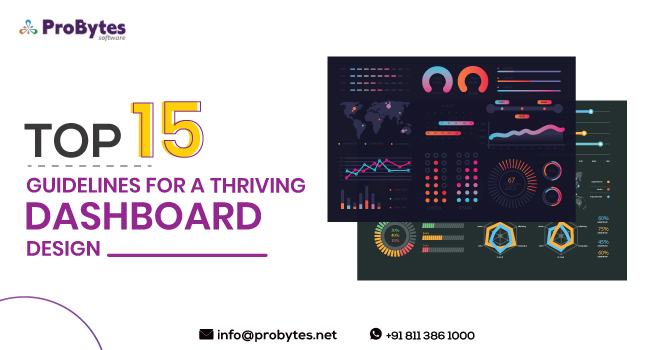Blog Category(283 Blogs)
Responsive VS Adaptive: What’s Best Choice For Designers?
Both Responsive and Adaptive websites are quite similar when it comes to the user interface (UI) of a website.
However, the only ground on which these two techniques differ is the way they both adjust the user interface.
For the sake of such individuals and for people curious about these two techniques, let us dive deeper into the world of Responsive and Adaptive design.
Responsive Design
When responsive design technique is taken into use to build a website, the appearance is changes based on the viewport of the browser.
In this design, the width of the browser is taken as a variable to determine the size of the changing elements on the page for a responsive website, size of the browser window or screen does not matter.
It is completely fluid and responds along with adjusting to the viewport. It is such due to percentage-based CSS rules which a responsive design takes into use to change the style based on the size of the device.
A responsive design website ensures the page always looks good. This is done by adjusting the page elements to a specified proportion whenever there is fluctuation in the size of the browser.
If we were to talk about the benefits of this design, they are countless. The leading advantage is that there is no need for codebase change for desktop, mobile, or any other size in between.
On contrary, quite a number of designers believe that responsive technique is more challenging. They believe in this since they have to design for a possibly infinite number of screen size.
Read also : Wish To Know The Duration of Redesigning a Website?
Well, yes it is true, but partially, designing such number on the screen also leads you to better adaptability and cleaner code.
Adaptive Design
Similar to the responsive design, an adaptive site also adjusts the layout of the page based on the width of the browser; only the way of doing it is different.
Adaptive design involves multiple representations for the same design. Every representation is chosen by the UI developer or the designer for each size. Each version is assigned to an ‘Anchor points’. Anchor Points is a specific browser width which triggers the browser to jump to the next layout when needed.
In simpler terms, what an Anchor points do is that it “snaps” the page elements and contents into place after the viewpoint passes the designated portal.
In general, a designer designs a layout, different for every one of the six very common viewpoint widths.
The six viewpoint width size range includes both from largest desktop panels to the smallest mobile devices. An adaptive design utilizes one static layout for each anchor point, instead of using percentage.
It adjusts to the screen size after the detection of that anchor point. An Adaptive design can also be challenging just like responsive design.
The designers have to actively design the same page again and again (six times to be precise), however, there is always scope for more. It is a complex approach as different layouts may be needed for a site demanding quite a number of pages.
Read also : How Long does it Take to Build a Website?
Adaptive vs Responsive Web Design
Responsive design is an easier technique and requires less effort when it comes to the implementation. It offers minimum control over the design on various screen size. However, it is the priority choice for many web developers for creating new sites.
The technique includes many cheap templates present for the CMS (Content Management System) like Joomla, WordPress, and many more.
Responsive design functions through building a single design that can be used on all screen size. It is the first choice of users as it guarantees to translate through any device’s screen. Consistency plays a crucial role in providing a good user experience.
Sites using responsive design are said to be more Search Engine Operation (SEO) compatible than others.
Cons of the design
After the implementation of the responsive technique, your website will be able to jump from device to device, adjusting as per the screen size of a desktop or mobile device.
However, any sort of additional advertisements that you tend to fit into space, will not be possible. Perhaps, this feature provided by responsive design might require re-work or a second thought.
The downloading speed or time varies from device to device i.e. whether it is a mobile device or a desktop.
Image mould ability is also a big concern when considering the function of this design to get adjusted as per the variant device’s screen size.
The bigger is the design (as it is in the responsive technique) more will be the time to load and appear on mobile.
However, it would have been better if there were to be a smaller and better preview for the mobile version.
Read also : Web Design and Development Company vs Freelancers
Adaptive design makes sure that it provides the best user experience as per the interface of the device, being used by a user.
It provides tailor-made solutions, which is perhaps completely different from responsive design as it jumps from desktop screen size to mobile screen size.
Adaptive design functions through adapting (as the name suggests) the user’s capabilities and different situational needs.
It is a design well-tuned with the requirements of the mobile users as the technique offers touch-friendly design.
Additionally, the design is on its way to do the same for desktop users as well.
Strength
It is more suitable for modern user experience. Responsive design does not stand out in this criterion as it holds and works on a more desktop-centered approach.
The adaptive design gives you access to optimize advertisements for your user interfaces. Additionally, an adaptive website is 2-3 times faster than the ones made with responsive design.
Drawbacks
Creating a website with an adaptive approach involves a lot more work and effort than a responsive one. Another drawback of the design is uncertainty.
Adaptive design can leave out tablet and notebook users in the middle of operations. This is because it has been designed for only smartphone and desktop users.
Last but not the least; it lacks the ability to be SEO friendly. SEB (Search Engine Bots) are getting better in respect to differentiating between “m.com, and “.com” sites.
Read also : Tips to Make a Killer Product Page for Your Online Store
Hence, it is wise to agree and accept the status quo. A maximum number of search engines do not rank similar content over multiple URLs equally, therefore the chances of you adaptive design website’s content might rank very low.
Which one to Choose?
If you lack the time and possess low budget or have timeline restrictions, then the adaptive design is the one, holding the ability to provide you with the best results.
On contrary, if you are someone who wishes to design a website from the scratch, responsive design is just the one for you. It promises to ensure a good user experience for you and your website visitors.
Whichever design you choose for your website, always remember that the choice you make will have a direct impact on the usability of your website.

 Python
Python Magento
Magento Odoo
Odoo How To
How To How Much
How Much Yii Development
Yii Development Core PHP
Core PHP Prestashop
Prestashop Latest News
Latest News Education
Education Web Design
Web Design Business
Business Ecommerce
Ecommerce Travel
Travel Banking and Finance
Banking and Finance Web Development
Web Development Ruby On Rails
Ruby On Rails Joomla Development
Joomla Development Ecommerce
Ecommerce Magento Development Services
Magento Development Services Hire a Developer
Hire a Developer Web Crawling Services
Web Crawling Services
















